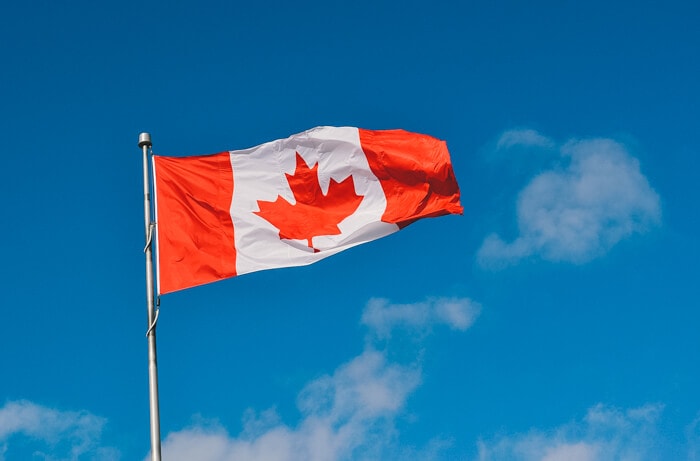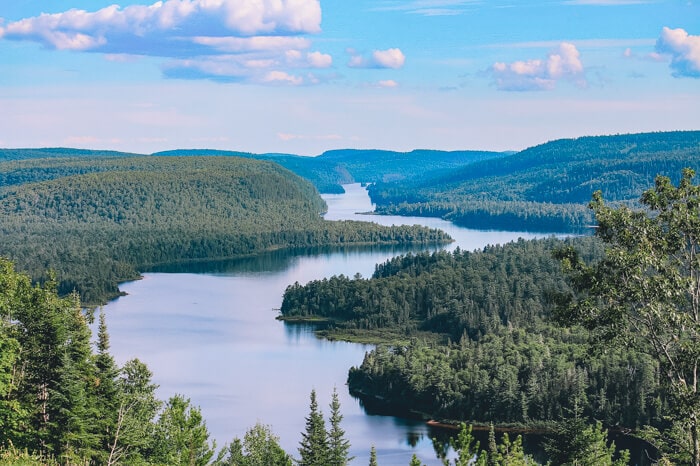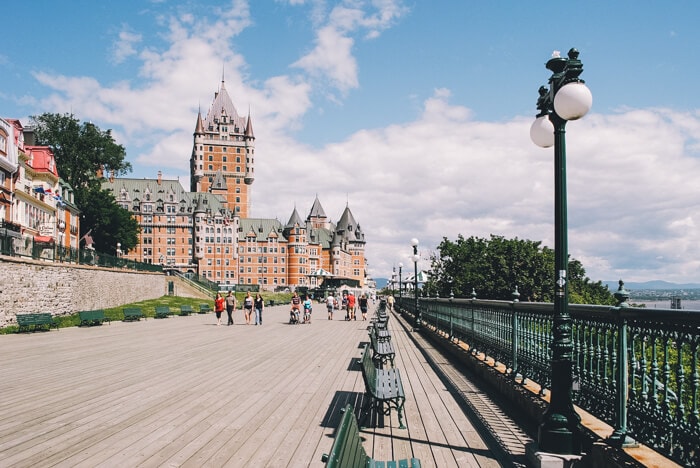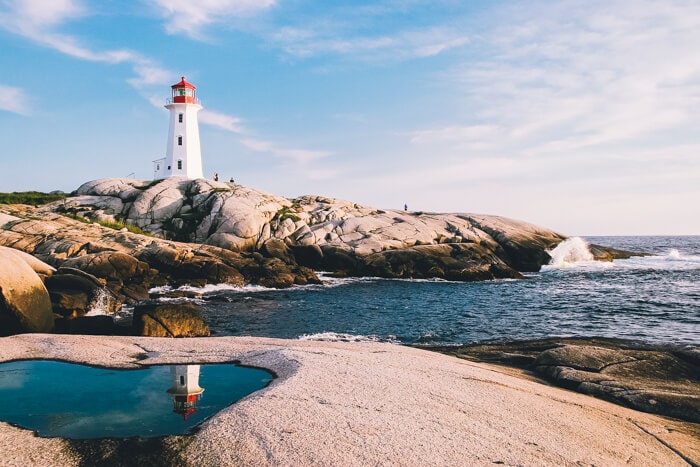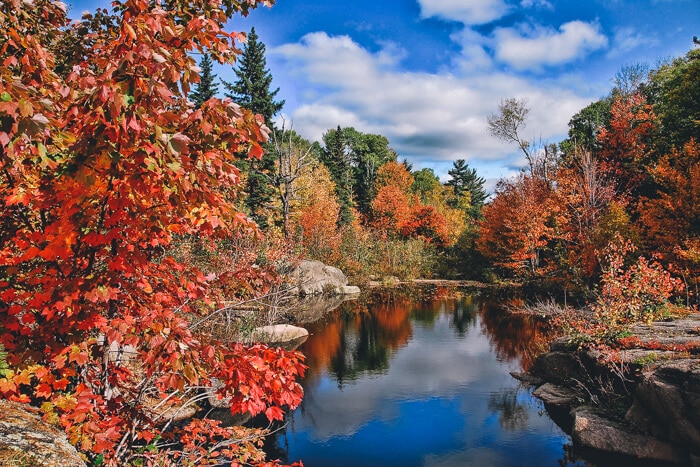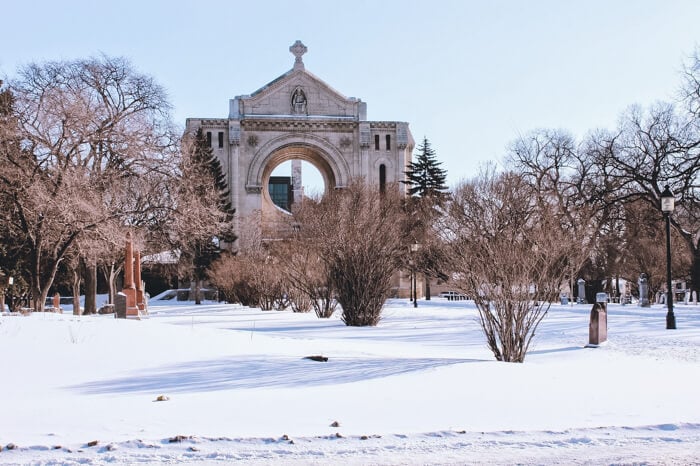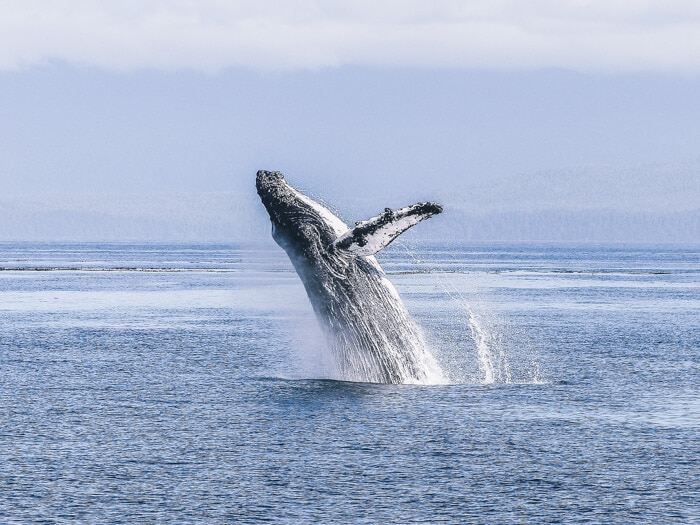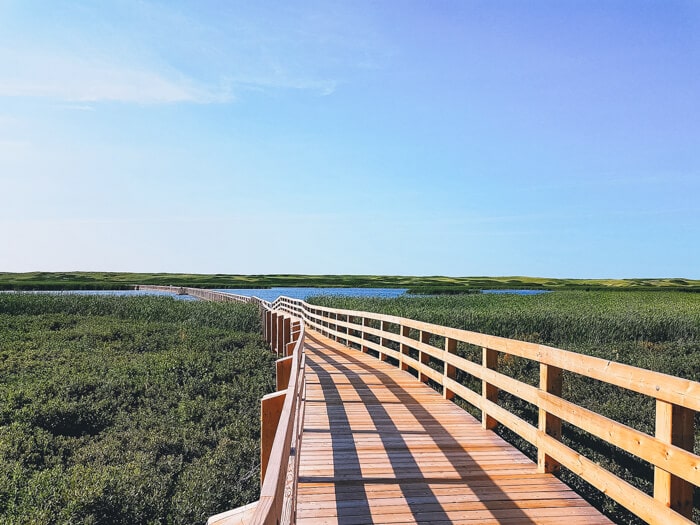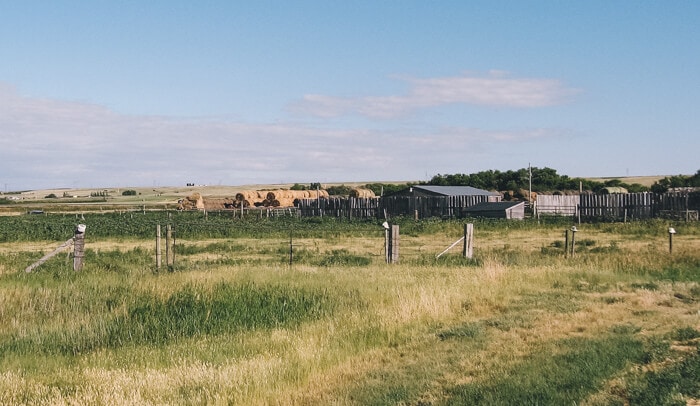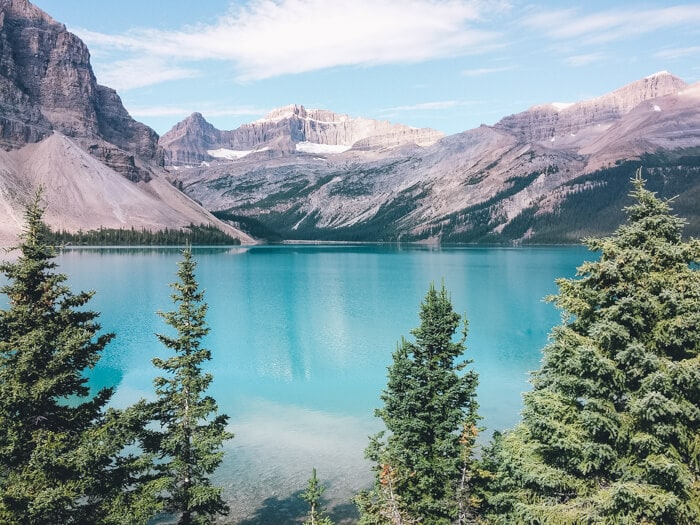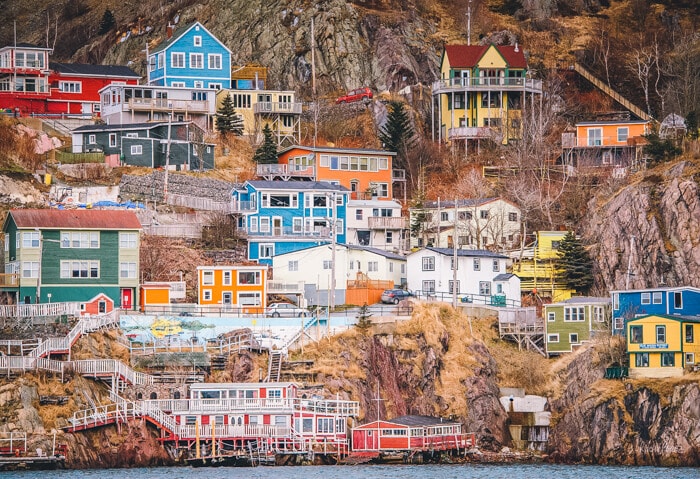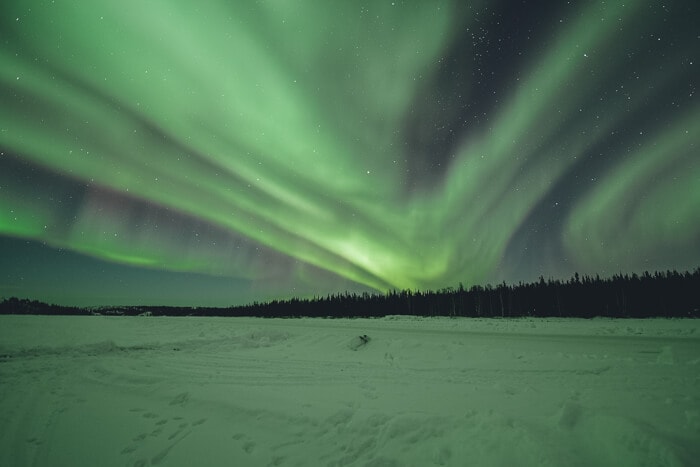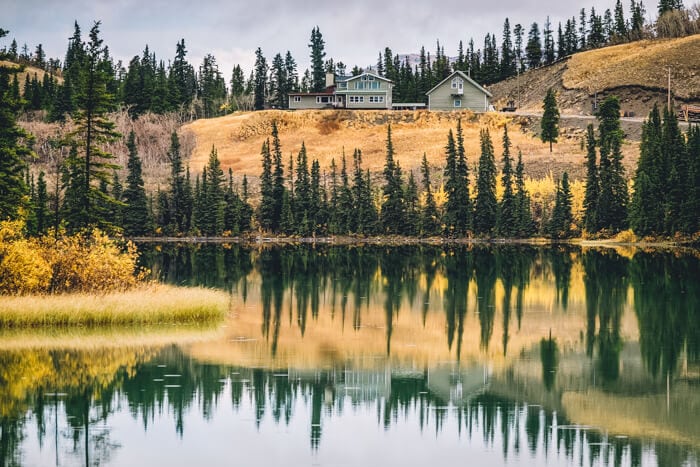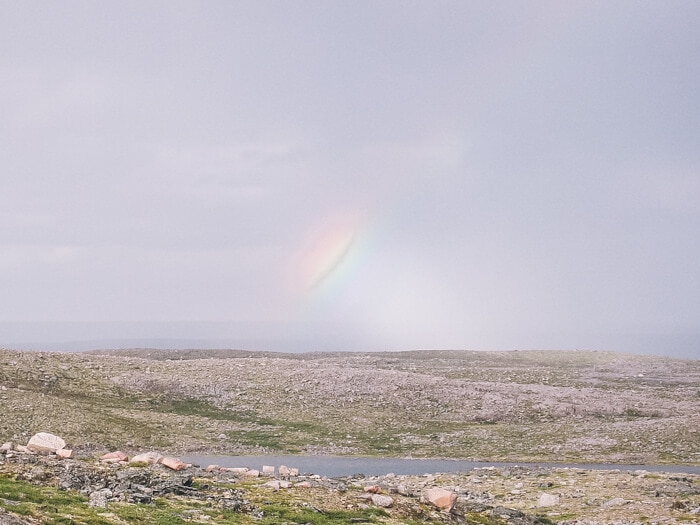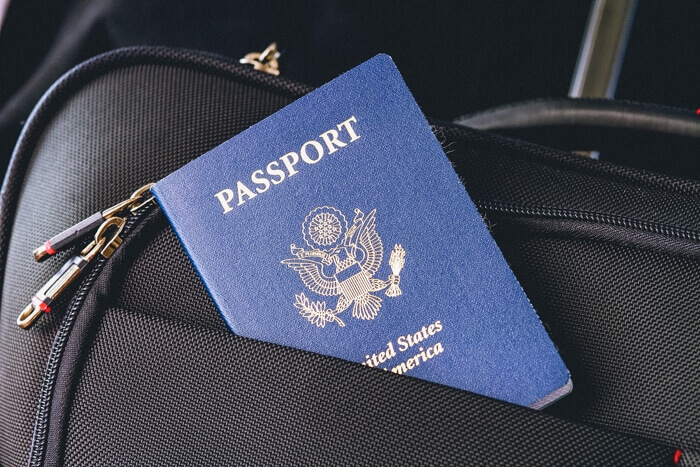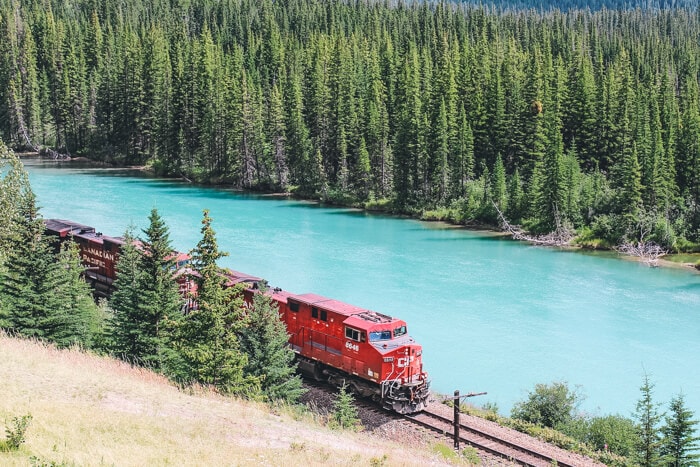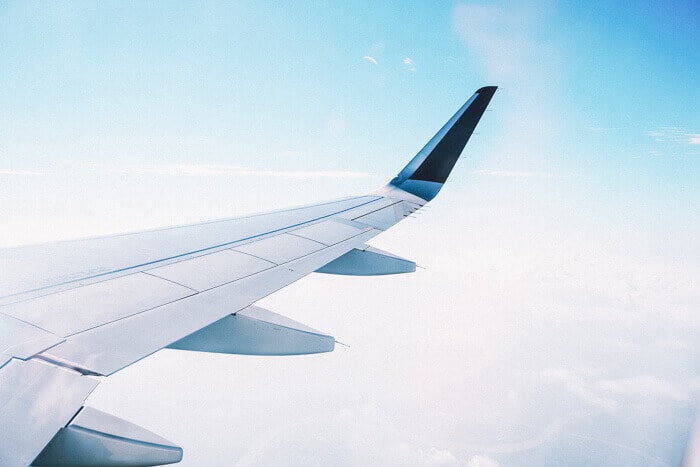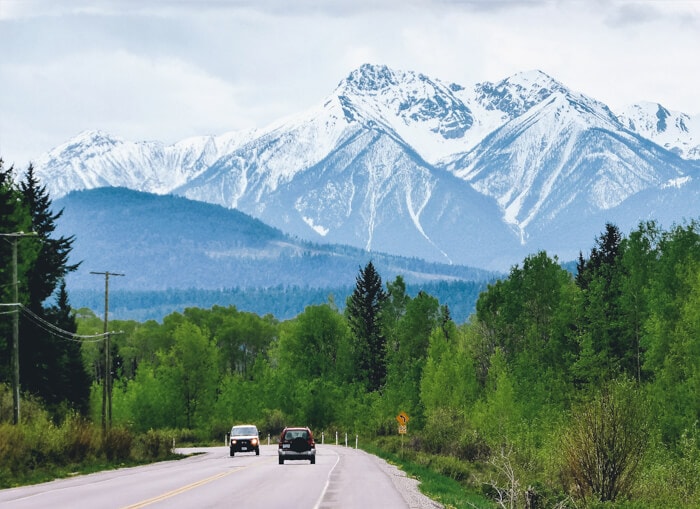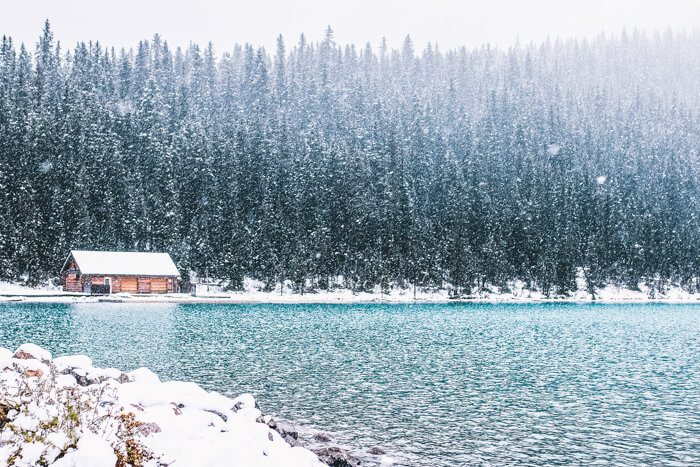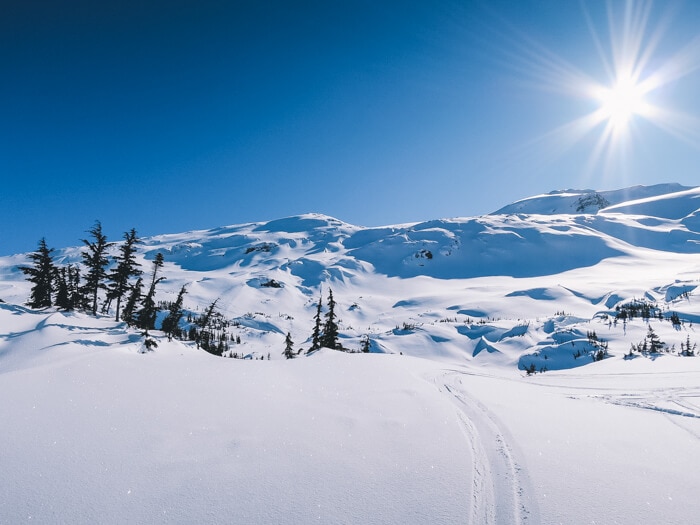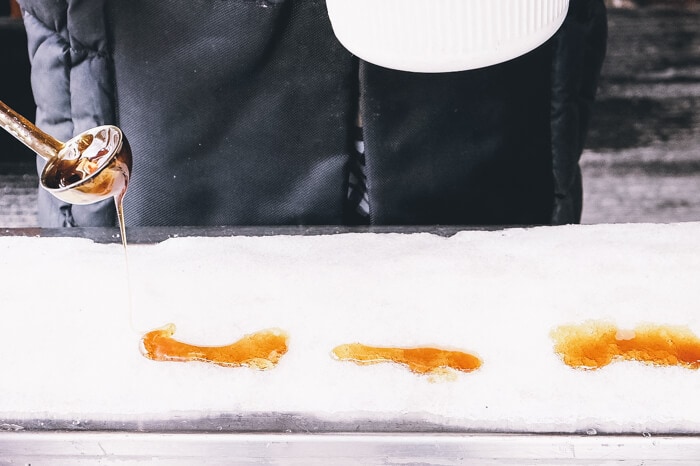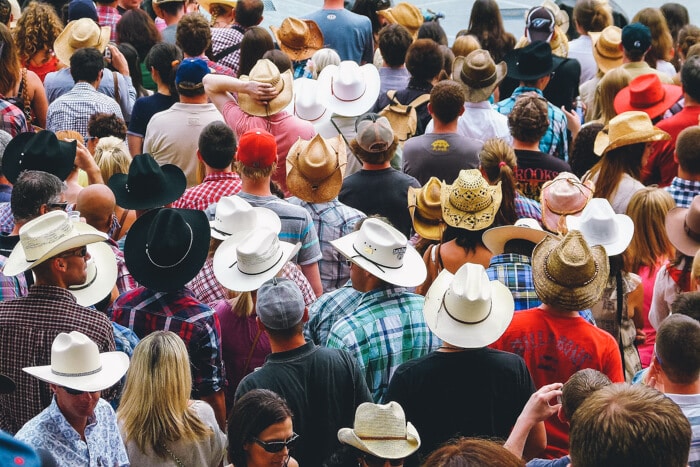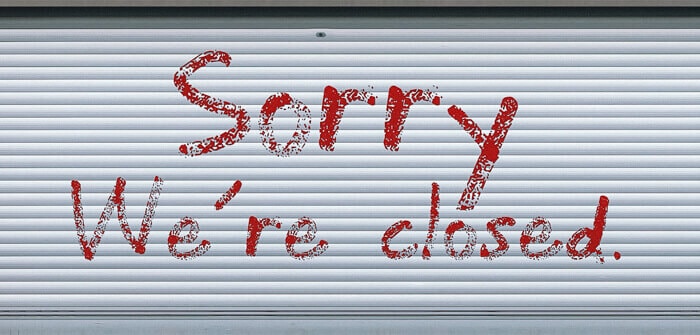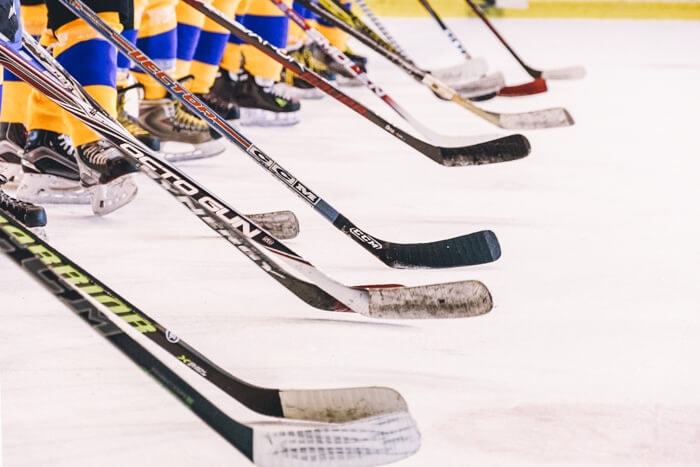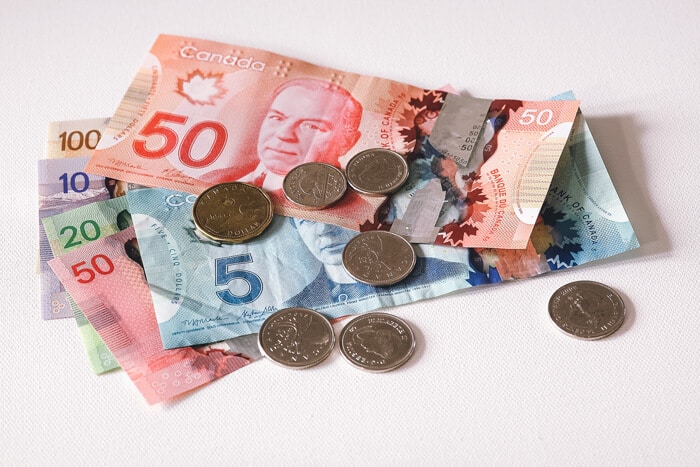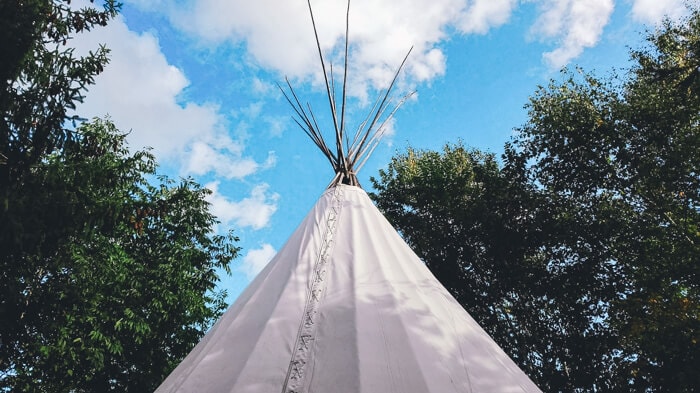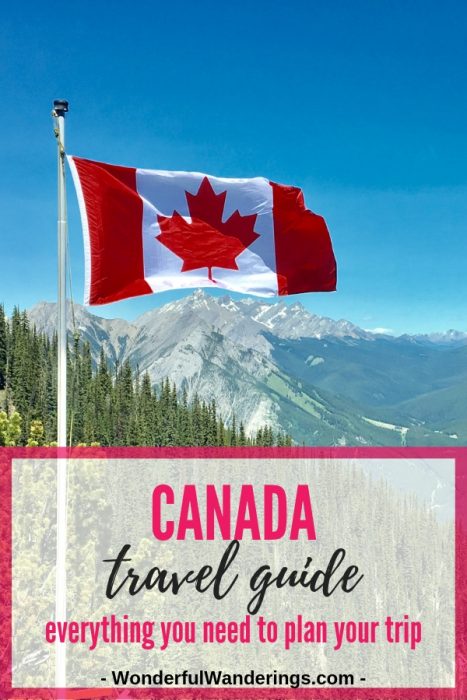Planning your Canada holidays? Great! This guide will help you do just that.
Let me start by saying that Canada is absolutely gigantic. It is the second largest country in the world, after Russia, and the border between Canada and the US is the longest land border between two countries in the world. Canada is a member of a number of international organizations including NATO, NAFTA, G7, G20, and the United Nations.
Canada is perhaps one of the most diverse countries in the world with regards to its landscape and climate. The nation boasts golden beaches along its west and east coasts, vast swathes of lush forest, snow-capped mountains and sparse tundra in the North. It is also home to a number of thriving, cosmopolitan cities. It is this wealth of diversity that makes it a great vacation destination.
Contents
- Canada holidays: quick facts
- Canadian provinces and territories
- How to travel to Canada
- How to travel around Canada
- What to pack for Canada
- The best time to travel to Canada
- What to eat in Canada
- 10 of the biggest events in Canada
- National public holidays in Canada
- Cultural customs to be aware of in Canada
- Where to stay in Canada
- Don’t forget travel insurance
- Safety in Canada
- The use of cash and cards in Canada
- Calling abroad, WiFi and data use in Canada
- Tipping in Canada
- A brief history of Canada
- Posts about Canada
Canada holidays: quick facts
Size: 9,984,670 km² or 3,854,085 sq mi
People living there: more than 35 million
Capital: Ottowa
Governmental structure: federal parliamentary democracy within a constitutional monarchy, with Queen Elizabeth II being the head of state. Canada belongs to the Commonwealth of Nations, an intergovernmental group of 53 now independent states that are mostly former territories of the British Empire.
National day: July 1
Time zones:
- Pacific Time (PT) / UTC−8: larger western part of British Columbia, Tungsten and the associated Cantung Mine in Northwest Territories, Yukon
- Mountain Time (MT) / UTC−7: Alberta, some eastern parts of British Columbia, most of Northwest Territories, Nunavut (west of 102°W and all communities in the Kitikmeot Region), Lloydminster and surrounding area in Saskatchewan
- Central Time (CT) / UTC-6: Manitoba, Nunavut (between 85° West and 102°W except for western Southampton Island), Ontario (Northwestern Ontario west of 90°W with some exceptions and Big Trout Lake area east of 90°W), Saskatchewan except Lloydminster
- Eastern Time (ET) / UTC-5: Nunavut east of 85°W and entire Southampton Island, Ontario east of 90°W (except Big Trout Lake area) plus several more western areas, Quebec (most of province)
- Atlantic Time (AT) / UTC-4: Labrador (all but southeastern tip), New Brunswick, Nova Scotia, Prince Edward Island, eastern part of Quebec
- Newfoundland Time (NT) / UTC-3:30: Labrador (southeastern), Newfoundland
Currency: Canadian dollar
Power voltage and socket type(s): 120V, plug types A and B. If these don’t match with your devices, make sure to bring a universal adapter.
Official religion(s)/Freedom of religion: Freedom of religion. 2/3 of the population is Christian, with 35% of Christians following Roman Catholicism. 23% are non-religious, followed by Muslims, Hindus, Sikhs, and Jews.
Official language(s) and general knowledge of English: French and English are Canada’s official languages.
Drives on this side: right
International driver’s licence accepted? yes
Phone code: +1
Vaccinations needed? No
Can you drink the tap water? Yes
Canadian provinces and territories
Canada is comprised of ten provinces and three territories which make it, geographically speaking, the second largest country in the world. The biggest differences between the Canadian provinces and the territories are where they get their power from. More about that on Wikipedia.
Both the provinces and the territories each have their own capitals.
Canadian provinces
1. Ontario
Capital city: Toronto
Ontario is the most populous of Canada’s provinces and territories. It comprises the cities of Toronto and Ottawa as well as large parts of four of the five Great Lakes (Erie, Superior, Huron, and Ontario). There is plenty to see and do in the cities, but the stand out feature of Ontario is undoubtedly Niagara Falls, which brings in hundreds of thousands of visitors every year from all over the world.
If you’re a nature-lover, there is virtually no end to the opportunities Ontario offers to explore Canada’s wilderness. Bruce Peninsula, Hamilton Waterfalls, and Flowerpot Island are just some of the natural highlights to be enjoyed here. For hiking enthusiasts, the Bruce Trail and Waterfront Trail are a must.
2. Quebec
Capital city: Quebec City
Although Quebec City is the capital of Quebec, the province’s most populous city is Montreal. Montreal is Canada’s most prominent hub of arts and culture and positively buzzes with creative energy. Quebec City is a more historical region and is home to the beautiful UNESCO recognized Vieux Quebec (Quebec’s Old Town). Here, you can wander through the museums or take a horse and carriage ride through the streets.
Outside of Quebec’s cities is a wealth of natural beauty. Whale watching in Tadoussac is always a big hit with visitors as are the colossal Montmorency Falls, which are actually 30 meters taller than Niagara Falls. For wildlife spotting head over to Omega Park where you will find bears, wolves, deer, and lynx.
3. Nova Scotia
Capital city: Halifax
Nova Scotia is Canada’s easternmost province and is one of the three provinces commonly known as The Maritimes, along with New Brunswick and Prince Edward Island. It is a beautiful province flanked by the Atlantic Ocean and covered with verdant nature. Lovers of the great outdoors will love hiking the trails in the Cape Breton Highlands and the gorgeous Kejimkujik National Park.
In Halifax, take some time to stroll along the boardwalk that lines the waterfront. You’ll enjoy views of the big ships and historic buildings as you gulp down the fresh ocean air. If you work up an appetite then you can satisfy your hunger with a delicious lobster dinner.
4. New Brunswick
Capital city: Fredericton
New Brunswick is one of Canada’s maritime provinces and borders Maine in the US along its western edge. The province is resplendent with nature and many a lazy day over summer can be spent basking in the sun and swimming in the Kennebecasis River. You might even spot a seal or a porpoise if you’re lucky.
The highlight of the province is the Fundy National Park, which boasts dozens of waterfalls, hiking trails, and lookout points from which you can watch the tides go in and out. You should also check out the obscure natural phenomenon that is the Reversing Falls in Saint John. Go at high tide to make the most of the experience.
5. Manitoba
Capital city: Winnipeg
Manitoba sits rights in the center of Canada, with the US bordering its southern edge and the Hudson Bay fringing its northern side. In the north of the province, in the town of Churchill, visitors can enjoy a sledding expedition, pulled by a pack of adorable huskies. For the more daring adventurer, there are opportunities for polar bear safaris and beluga whale watching trips.
Further adventure activities can be found in the Caddy Lake Rock Tunnels, which are accessible by kayak. Within Winnipeg itself, visitors will find a plethora of restaurants and shops as well as the beautiful Assiniboine Park and Zoo. For a spot of culture, you should also check out the Museum of Human Rights, which is the only museum of its kind in the world.
6. British Columbia
Capital city: Victoria
Lining Canada’s west coast and facing out towards the Pacific Ocean is the picturesque province of British Columbia. For the cosmopolites among us, Vancouver is a must. Filled with trendy brunch spots, museums, boutiques, and bars, there is no shortage of things to do in Vancouver. But, the city isn’t just an urban playground, it also has a myriad of natural spots, including Stanley Park, Capilano Suspension Bridge Park, and the clothing-optional Wreck Beach.
Outside of Vancouver, the natural beauty continues. The Squamish cable car offers spectacular views of the province’s landscape, complete with turquoise lakes, dense forests and jagged mountains dusted with snow. If you’re a skiing enthusiast, don’t forget to head up to the world-famous Whistler region and if you’re into quirky events, check out the half-corked marathon wine run in Osoyoos.
7. Prince Edward Island
Capital city: Charlottetown
Best known as the home of Anne of Green Gables, Prince Edward Island is one of Canada’s most delightful provinces. Whilst on the island you can visit Green Gables House or the birthplace of Anne’s creator, Lucy Maud Montgomery. You can even watch the Anne of Green Gables musical in the Confederation Center of the Arts.
Its famous red sand beaches and grassy slopes give the island a unique landscape that can be explored by following one of its dozen of hiking trails. The Confederation Trail and Greenwich Dunes Trail are among the most popular. Alternatively, get lost in nature in the Prince Edward Island National Park
8. Saskatchewan
Capital City: Regina
Saskatchewan is just west of central Canada and is not usually the first place that comes to mind when people plan their trips to Canada. However, Saskatchewan is full of surprises and also full of activities. In winter, the region is perfect for snow-based adventures, including dog-sledding, tobogganing, ice fishing, cross-country skiing and more.
In the summer, Saskatchewan’s locals and visitors shed their layers and enjoy the sunshine as they golf, canoe, hike, and ride horses. If you have plenty of time, make the journey to the stunning Athabasca Sand Dunes Provincial Park way up in northern Saskatchewan. It might not be the most accessible park in the country, but it is one of the most beautiful.
9. Alberta
Capital city: Edmonton
Over in western Canada is Alberta, which is home to a hefty portion of Canada’s most sensational natural beauty. Up in the Rockies are Banff and Jasper National Parks. Both of these parks are filled with turquoise glacial lakes, glaciers, snow-capped mountains, and an abundance of wildlife. The route between them, the Icefields Parkway, offers one of the most scenic drives in the country.
Smaller but also fun is Elk Island National Park.
If you want a city vibe during your stay in Alberta, you will find it in Calgary and Edmonton. Although Edmonton is the capital city, Calgary is far more populous and has more to do. The city is packed with sights, including the Calgary Tower, Glenbow Museum, Calgary Zoo, and the delightful Prince’s Island Park.
10. Newfoundland and Labrador
Capital city: St. John’s
Sitting to the northeast of Quebec is the province of Newfoundland and Labrador. A popular activity here is a boat trip to see the humpback whales as they migrate past the coastline. These trips are often combined with a tour of the province’s impressive icebergs.
The provincial capital, St. John’s, is well worth taking the time to explore. It is one of the oldest settlements in all of North America and has a rustic and authentic feel. Admire the colourful houses built into the craggy cliff faces along the harbour or head into town for live music and lobster.
Canadian territories
1. Northwest Territories
Capital city: Yellowknife
Canada’s Northwest Territories encompass a large part of northern Canada, extending all the way up into the Arctic Tundra. The territory’s capital, Yellowknife, sits on the shore of the Great Slave Lake and is known for its frequent Northern Lights sightings.
A trip to the Northwest Territories is all about getting back to basics and being at one with nature. The Nahanni National Park and Twin Falls Gorge Territorial Park are two of the best places in the territory to disconnect entirely. These parks boast miles on end of rugged wilderness and sparkling lakes.
2. Yukon
Capital city: Whitehorse
Remote and astonishingly beautiful, Yukon is the least populated of all of Canada’s provinces and territories. If you were hoping to spend your time in Canada ogling world class natural beauty, then Yukon is the place to be. Head over to Kluane National Park to marvel at the ice fields and forests. You might even catch a glimpse of a moose or grizzly bear.
If you’re the active type, the possibilities are endless in Yukon. In the summer there are plenty of opportunities to hike, cycle and canoe while the winter is perfect for sledding and ice fishing.
Capital city: Iqaluit
Nunavut only became an official territory in 1999 but it has been the home of the Inuit and other First Nations people for over 4,000 years. It comprises most of the Canadian Arctic Archipelago and is roughly the size of Western Europe!
Nunavut’s landscape is peppered with tiny, remote villages, jagged mountains, and dazzling glaciers. Nowhere on Earth is Mother Nature’s power so clear. Look to the water and you might spot a graceful narwhal or keep your feet on dry land and learn about the culture of Inuit people.
How to travel to Canada
Entering Canada
British and American citizens and most EU citizens require an electronic travel authorization (eTA) before entering Canada by air. If you are entering by land or sea you do not need an eTA. You do need a passport to travel to Canada.
How to go to Canada
Traveling to Canada by train
Amtrak trains connect New York to Montreal and Niagara Falls, and Seattle to Vancouver. The trains are not cheap but they are delightfully scenic and a real experience.
Traveling to Canada by car or bus
The only way to enter Canada by land is if you are traveling from the US. There are over 100 land border crossings between the two countries. Greyhound is the most commonly used bus company to cross the border. Take note that you may have to wait up to an hour at passport control before you can cross although usually, the process is relatively quick.
Traveling to Canada by ferry
There are ferries to Canada from a number of US states and they cross the Atlantic and Pacific Oceans as well as the Great Lakes. Ferries run between Canada and Maine, Ohio, New York, Michigan, and Washington.
Look here for ferry routes and prices into Canada.
Fly to Canada
Canada has dozens of international airports but if you are flying from abroad, you will most likely fly into one of the larger and more popular airports. Canada’s top ten busiest airports are:
- Toronto Pearson International Airport, Toronto, ON
- Vancouver International Airport, Vancouver, BC
- Montréal–Pierre Elliott Trudeau International Airport, Montreal, QC
- Calgary International Airport, Calgary, AB
- Edmonton International Airport, Edmonton, AB
- Ottawa Macdonald-Cartier International Airport, Ottawa, ON
- Winnipeg James Armstrong Richardson International Airport, Winnipeg, MB
- Halifax Stanfield International Airport, Halifax, NS
- Billy Bishop Toronto City Airport, Toronto, ON
- Kelowna International Airport, Kelowna, BC
Look here for the best flights to Canada.
How to travel around Canada
Independent travel around Canada
Traveling around Canada independently is easy. Given the size of Canada, most people fly between provinces using the flagship carrier Air Canada. However, if you want to save money, provinces are well connected by bus. The main bus companies are Coach Canada, Greyhound, Orleans Express and Megabus and they offer regular services between big cities.
An alternative is to travel by train. Via Rail connects Canada from coast to coast but can be just as expensive as flying. If you are feeling particularly adventurous you could also try hitch-hiking. Canadians have a reputation for being some of the friendliest people on Earth, so you’re bound to find someone who will give you a ride.
Traveling within cities is usually possible by bus although the big metropolitan areas, such as Vancouver, Montreal, and Toronto are also connected by metro.
My personal preference goes to traveling by car – at least outside the big cities – at it offers you the most flexibility. Look here for a good overview of rental car prices.
What to pack for Canada
Canada is a country of extreme weather. In the summer in the southern parts of the country, the weather can get pretty warm – even reaching 30 degrees at some points in July and August. However, during the winter months, temperatures can go as low as -20 degrees Celsius, especially in the North. And, of course, in Vancouver, it just rains all the time. So, be prepared for everything!
What to pack for Canada in summer
- sunglasses
- suncream
- a swimsuit
- light clothing
- a light rain jacket
- good walking sandals
- a reusable water bottle
- hiking trousers
What to pack for Canada in winter
As I’ve visited Canada in winter twice already, I created a detailed packing list for Canada in winter. Check it out.
What to pack for Canada in fall and spring
- a light yet warm and waterproof jacket
- comfortable shoes
- a reusable water bottle
- hiking trousers
- layers to quickly adapt to the weather
The best time to travel to Canada
The best time to visit Canada depends on what you want out of your vacation. To enjoy the ski season, visit Canada between October and April. For warm weather that lets you enjoy the beaches and national parks, May through to September is the best time to visit.
What to eat in Canada
You might not think Canada has much to offer by way of national dishes, but you would be surprised what culinary delights the country has up its metaphorical sleeve.
- Poutine – (let’s start with the most obvious) french fries covered with cheese curds and gravy
- Beaver tails – flattened donut shaped like a beaver’s tail, covered with sugar and a variety of toppings, such as Nutella or maple syrup
- Caesar – a cocktail made of clamato juice, vodka, and Worcester sauce – much like the British Bloody Mary
- Nanaimo bars – crumbly biscuit base, a layer of vanilla butterscotch icing and melted chocolate on top
- Butter tart – flaky pastry filled with egg, sugar, syrup, butter
- Maple syrup – no trip to Canada is complete without drinking at least a gallon of this sweet, sticky syrup. It’s perfect on pancakes, waffles, ice cream and just about anything else
- Lobster rolls – shredded lobster and lettuce mixed with mayo in a toasted hot dog bun
- Tim bits – little donut balls dusted with sugar available from the legendary Tim Hortons
- Montreal bagels – thinner and sweeter than normal bagels with bigger holes in the middle
For check out my post on Canadian foods for more inspiration.
10 of the biggest events in Canada
- Calgary Stampede
- Rifflandia in Victoria
- Igloofest in Montreal
- Quebec Winter Festival in Quebec City
- Vancouver Celebration of Light
- Edmonton Folk Festival
- Toronto International Film Festival
- Montreal Jazz Fest
- Canada Day, everywhere
- Celtic Colours International Festival in Cape Breton
National public holidays in Canada
On the following holidays, government offices and most businesses in the whole of Canada are closed. Please note that many provinces also have local public holidays which I haven’t listed here. Also, holidays that are public holidays for multiple provinces but not all are not listed here.
- New Year’s Day
- Good Friday
- Easter
- Good Friday or Easter Monday
- Canada Day (July 1)
- Labour Day (first Monday of September)
- Remembrance Day (November 11)
- Christmas Day
Cultural customs to be aware of in Canada
Canadians are some of the friendliest folk around and will rarely get upset with you The only thing to be aware of is that Canadians might come across as too friendly, especially if you are British. Don’t be surprised if a Canadian strikes up a conversation with you on a bus or in a shop – that’s totally normal over there.
Another thing my Canadian friends have told me is that their friendliness often contains subtle hints to say that they actually don’t approve of something or don’t like you at all, but that these are very hard to pick up if you’re not Canadian.
Where to stay in Canada
You find a range of accommodation options all over Canada, from hostels to boutique hotels and cozy rental apartments.
Check Booking.com for a wide selection of hotels at the best prices.
If you rather stay at a rental apartment, I suggest checking Airbnb.
Don’t forget travel insurance
Canada is generally a safe country to travel to but there’s always the risk of cancellations, getting ill or breaking your electronic gear while you’re traveling there. When those things happen, travel insurance has got you covered. I’ve had ongoing travel insurance ever since I started traveling to make sure I’m covered for every trip I go on.
Safety in Canada
Canada was ranked the 6th safest country in the world for 2019 so there’s no need to feel on edge while you’re there. Nevertheless, you should keep an eye on your valuables when you’re out at night in the big cities.
The use of cash and cards in Canada
Both cash and cards are accepted everywhere in Canada. However, it is a good idea to keep a small amount of cash on you just in case.
Calling abroad, WiFi and data use in Canada
As I have a Belgian/European SIM card, I would normally pay roaming charges when calling, texting, or using data in Canada. To get around this, I use the Solis mobile hotspot by Solis Wifi and buy day passes for the duration of my trip.
Aside from day passes, Solis Wifi also offers monthly prescriptions providing you with 4G throughout your trips. I’ve been using their daily passes not just when I travel outside the EU (no roaming charges for me in the EU) but also as a backup for when I think I’ll go over my phone’s data plan.
Check out Solis Wifi here.
Tipping in Canada
Service staff in Canada receives low wages and rely heavily on tips so tipping is custom and even kind of obligatory. For more information on who to tip what when and where, check out this section on tipping in Canada.
A brief history of Canada
The first European venture into Canada is recorded as having taken place in 1497. It was an expedition led by John Cabot. Up until this point, the country was home to Inuits and what are known now as First Nations people. The French then took possession of the country in 1534.
Over the next few hundred years, the British would claim virtually all of Canada by means of conquest or cession from the French. The British even took Quebec in 1629 but returned it three years later.
In the 19th century, the country flourished with the blossoming of the shipbuilding industry and the creation of the Canadian Pacific Railway. In 1896, gold was discovered in Klondike in Yukon and a gold rush ensued that would turn Klondike into a boom town.
Today, Canada is a prosperous country that is rich in natural resources. Alberta is a major oil and gas player thanks to its plentiful natural deposits and the vast oil sands in the North. British Columbia, meanwhile, is focussed on extracting liquefied natural gas. The country has also become a hotspot for ski resort seasonal workers, backpackers, luxury travelers and everything in between.
Posts about Canada
Click here for all the posts I’ve written about Canada.
PIN FOR LATER
This guide contains affiliate links. If you book or buy something through these links, I earn a small commission at no extra cost to you.

